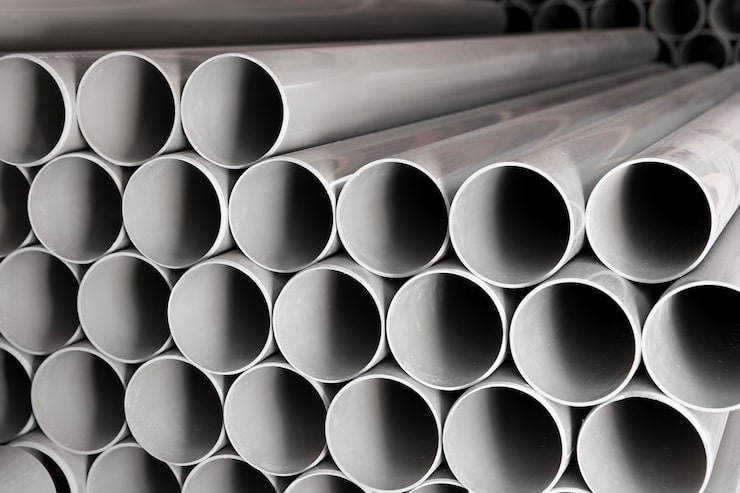What are the different types of industrial pipes is a question often asked by engineers, project managers, and procurement specialists in industries such as oil and gas, chemical processing, power generation, and water treatment. Industrial pipes are essential components for transporting liquids, gases, and sometimes solids under varying pressures and temperatures. The choice of pipe type directly affects system performance, safety, and cost-efficiency. Each type of industrial pipe is designed for specific operating conditions, materials compatibility, and installation requirements, making it crucial to understand the available options before starting a project.
Industrial piping systems are not limited to a single material or design. They encompass a range of metals, alloys, and plastics, each offering unique benefits. Factors such as corrosion resistance, pressure rating, temperature tolerance, and chemical compatibility play a major role in selecting the right type of pipe for a given application.

Carbon steel pipes
Carbon steel pipes are among the most widely used in industrial settings due to their strength, durability, and cost-effectiveness. They are ideal for transporting water, steam, oil, and natural gas under high pressure. Carbon steel pipes are available in both seamless and welded forms, with seamless pipes offering higher strength and better resistance to leaks.
They perform well in high-temperature applications, such as steam lines in power plants. However, they are susceptible to corrosion in certain environments, which is why protective coatings or linings are often applied. Maintenance programs must account for periodic inspections to monitor for rust or thinning walls.
Stainless steel pipes
Stainless steel pipes are known for their excellent corrosion resistance, making them suitable for environments where moisture, chemicals, or extreme temperatures are present. They are widely used in the food and beverage, pharmaceutical, and chemical industries where hygiene and material purity are critical.
Grades such as 304 and 316 stainless steel are common, with 316 offering enhanced resistance to chlorides and other corrosive substances. Stainless steel pipes are more expensive than carbon steel but provide longer service life and reduced maintenance needs, which can offset the initial cost over time.
Alloy steel pipes
Alloy steel pipes are engineered for specialized performance under extreme conditions. By adding elements such as chromium, molybdenum, or nickel to the steel, these pipes achieve improved strength, heat resistance, and corrosion resistance.
They are often used in power plants, petrochemical facilities, and high-temperature process systems. Alloy steel pipes can handle elevated pressures and temperatures beyond the limits of carbon steel, making them essential in demanding applications.
Ductile iron pipes
Ductile iron pipes combine the strength of cast iron with enhanced flexibility and toughness. They are widely used for water and wastewater systems, particularly in municipal infrastructure projects. Ductile iron resists cracking under stress and can handle moderate pressures.
These pipes typically have an internal cement mortar lining to protect against corrosion and improve water flow efficiency. Their long service life and ability to withstand underground conditions make them a reliable choice for buried pipelines.
Copper pipes
Copper pipes are valued for their thermal conductivity, corrosion resistance, and antimicrobial properties. While more common in plumbing than large-scale industrial systems, they are used in HVAC systems, refrigeration, and certain chemical applications.
Copper can handle both hot and cold fluids, and its resistance to scaling ensures consistent flow over time. However, it is relatively expensive and may not be suitable for highly acidic or alkaline fluids.
Plastic and composite pipes
In many industries, plastic pipes offer advantages such as lightweight construction, ease of installation, and resistance to chemical corrosion. Common types include:
PVC (Polyvinyl Chloride) – Ideal for low-pressure water and drainage systems.
CPVC (Chlorinated PVC) – Offers higher temperature resistance than PVC.
HDPE (High-Density Polyethylene) – Flexible, durable, and suitable for underground applications.
PP (Polypropylene) – Resistant to a wide range of chemicals, often used in process piping.
Composite pipes combine different materials—such as fiberglass-reinforced plastics (FRP)—to achieve a balance of strength, corrosion resistance, and weight reduction. These are often found in chemical processing, desalination plants, and marine applications.
Concrete pipes
Concrete pipes are typically used for large-diameter water transmission and stormwater drainage. They are strong, durable, and capable of handling heavy loads, making them suitable for buried applications.
Reinforced concrete pipes can handle significant external pressures and are often lined or coated to resist internal corrosion from aggressive water or wastewater.
Galvanized steel pipes
Galvanized steel pipes are coated with a layer of zinc to improve corrosion resistance. They are commonly used for water supply lines, outdoor piping, and certain structural applications. While the zinc layer offers protection, these pipes may still corrode over time, especially in acidic or saline environments.
Glass-lined pipes
Glass-lined pipes are designed for highly corrosive chemical processes. The inner glass lining prevents the transported medium from reacting with the pipe material, ensuring purity and protecting the pipe from damage.
These pipes are often found in pharmaceutical, food processing, and specialty chemical industries where contamination must be avoided.
Factors influencing pipe selection
Choosing among the different types of industrial pipes requires careful consideration of several factors:
Fluid or gas properties – Corrosiveness, abrasiveness, toxicity, and purity requirements.
Pressure and temperature – Operating conditions determine the required material strength and wall thickness.
Installation environment – Above-ground, underground, submerged, or exposed to weather conditions.
Maintenance and lifespan – Expected service life and ease of inspection or replacement.
Cost and availability – Balancing performance requirements with budget constraints.
Regulatory compliance – Meeting industry standards such as ASME, ISO, or API.
Applications across industries
Different pipe types serve different sectors:
Oil and gas – Carbon steel, alloy steel, and stainless steel for high-pressure pipelines.
Chemical processing – Stainless steel, alloy steel, FRP, and glass-lined pipes for corrosion resistance.
Water treatment – Ductile iron, HDPE, and concrete pipes for municipal supply and wastewater systems.
Food and beverage – Stainless steel and certain plastics for sanitary applications.
Power generation – Alloy steel and carbon steel for steam and cooling systems.


